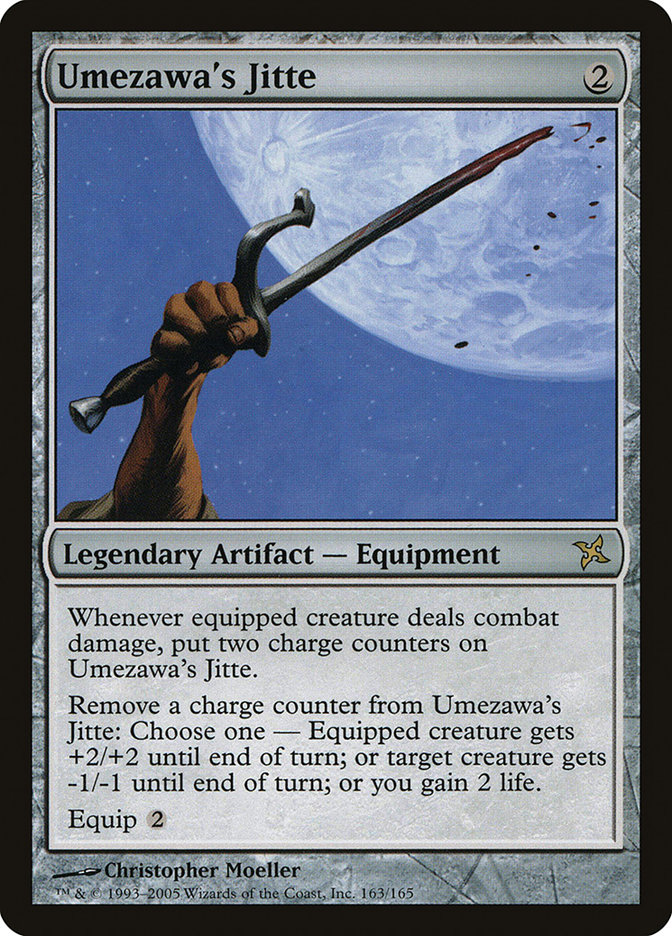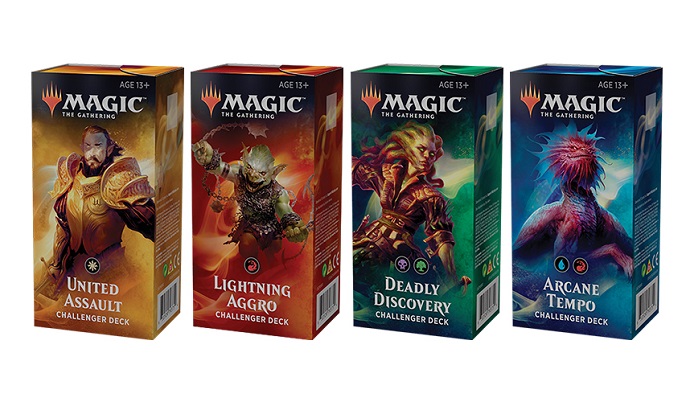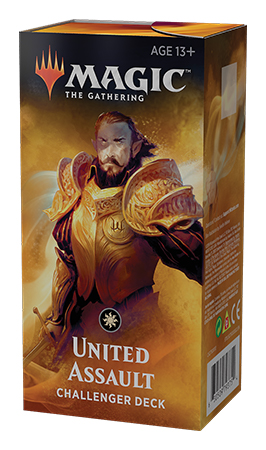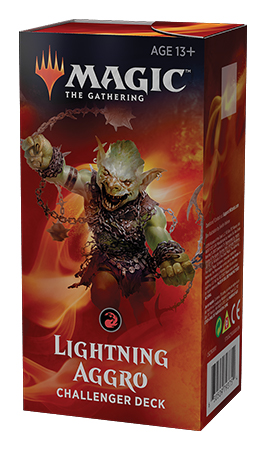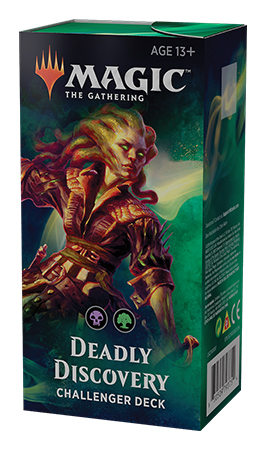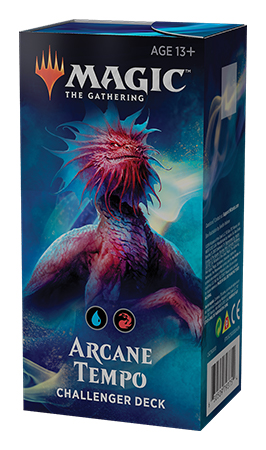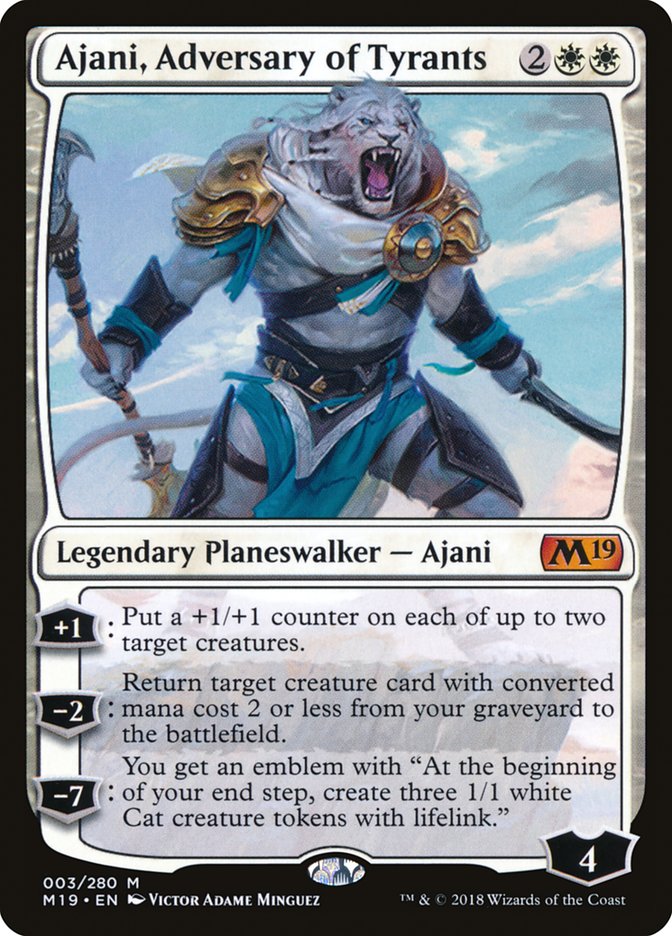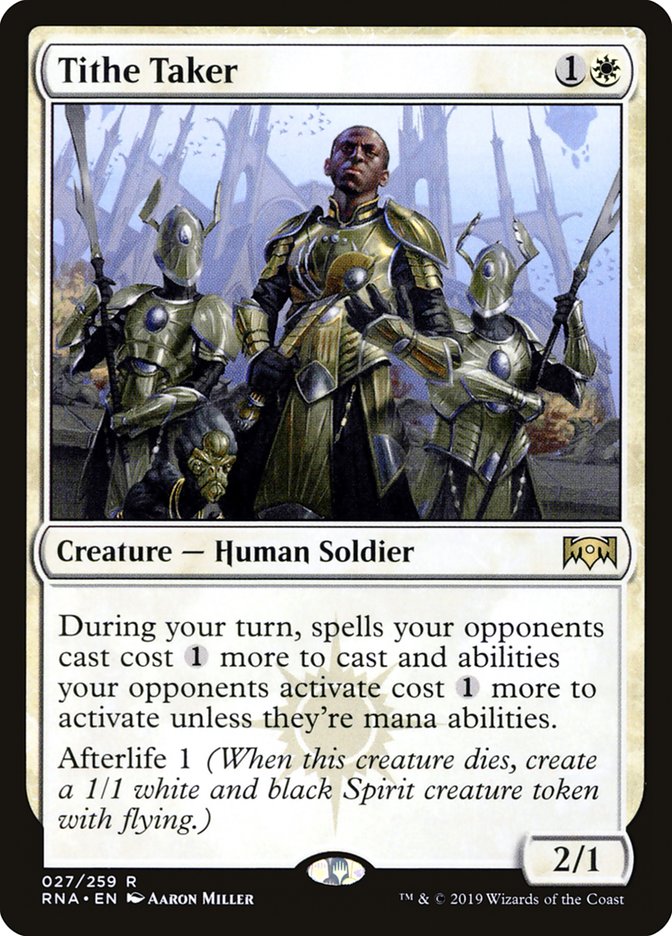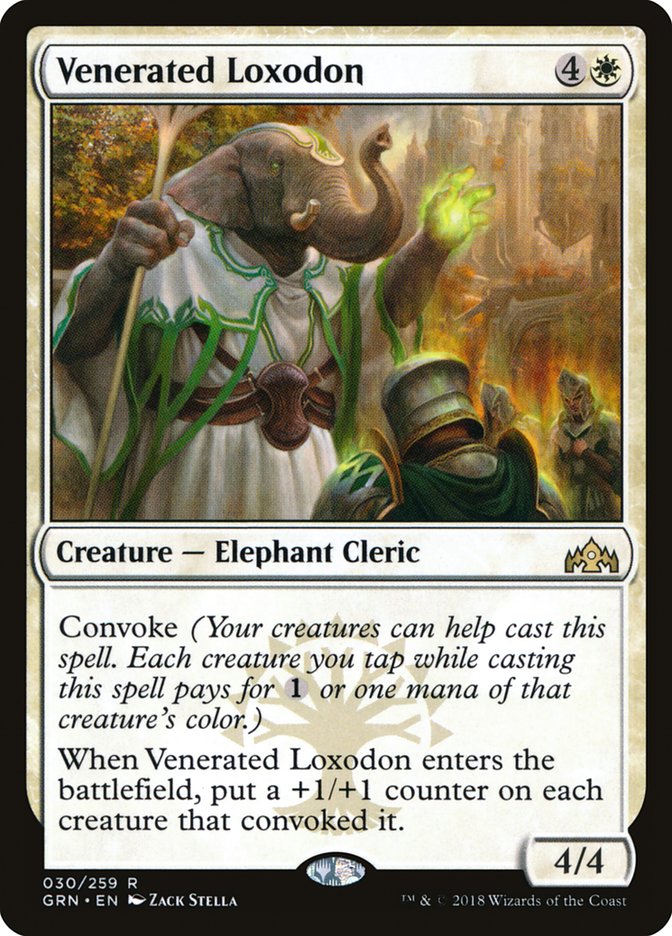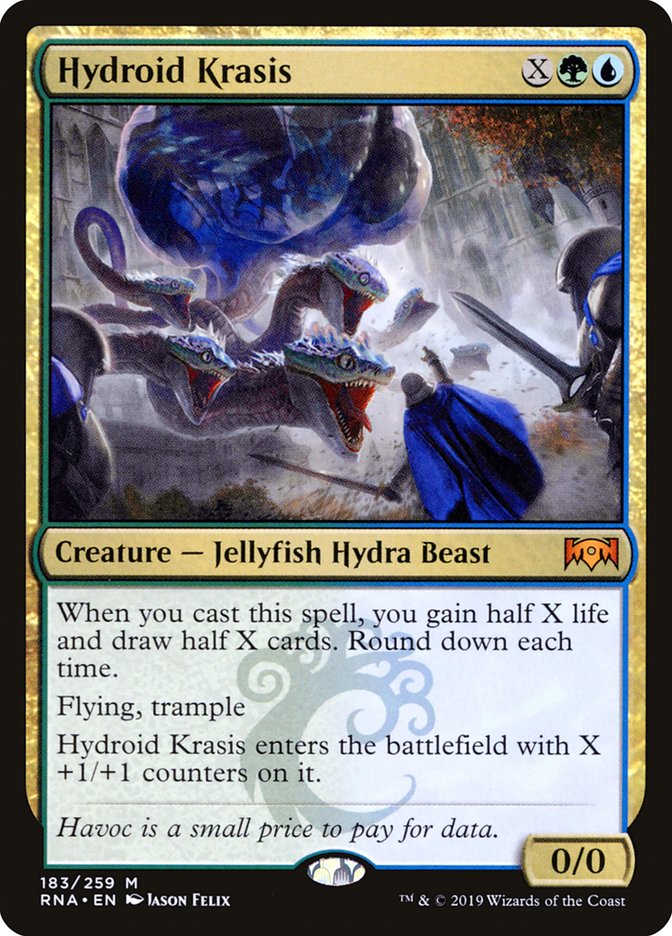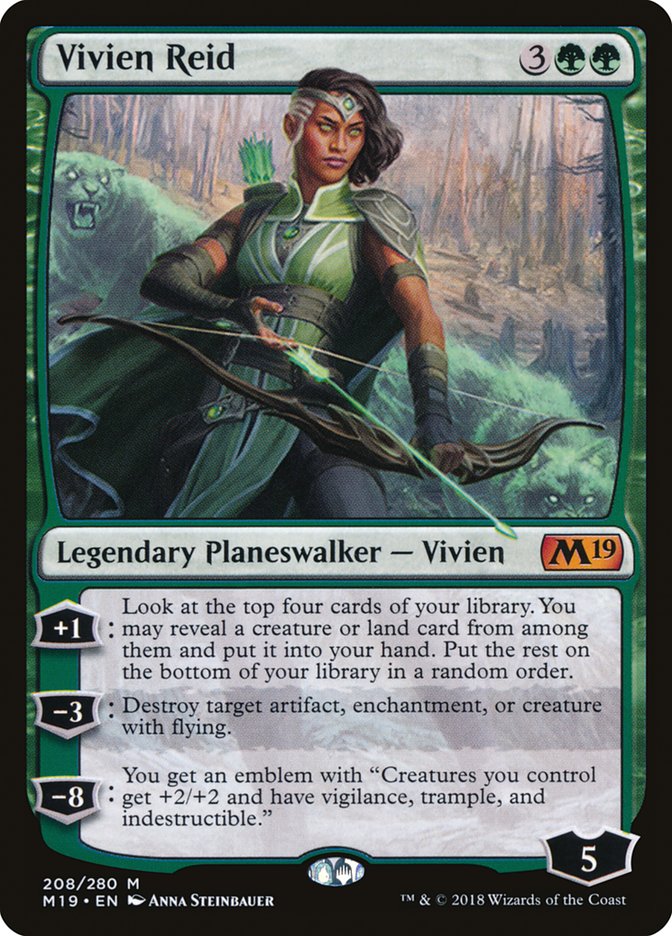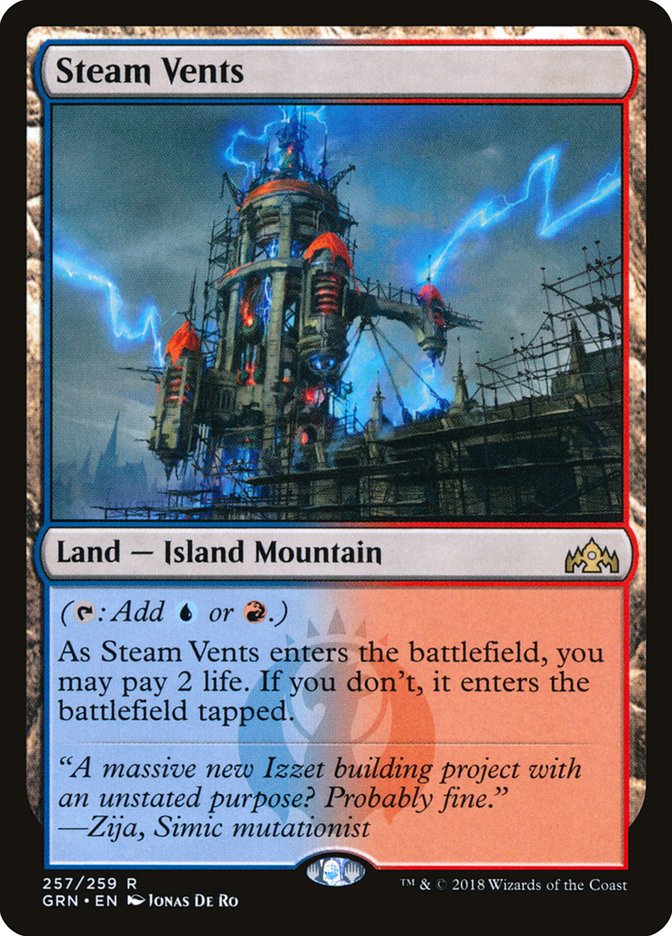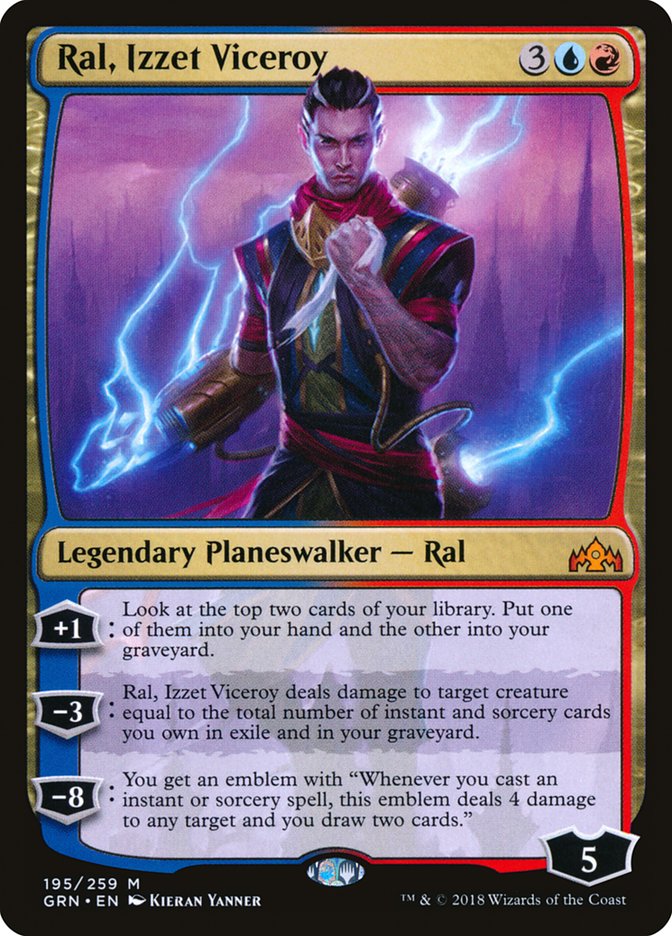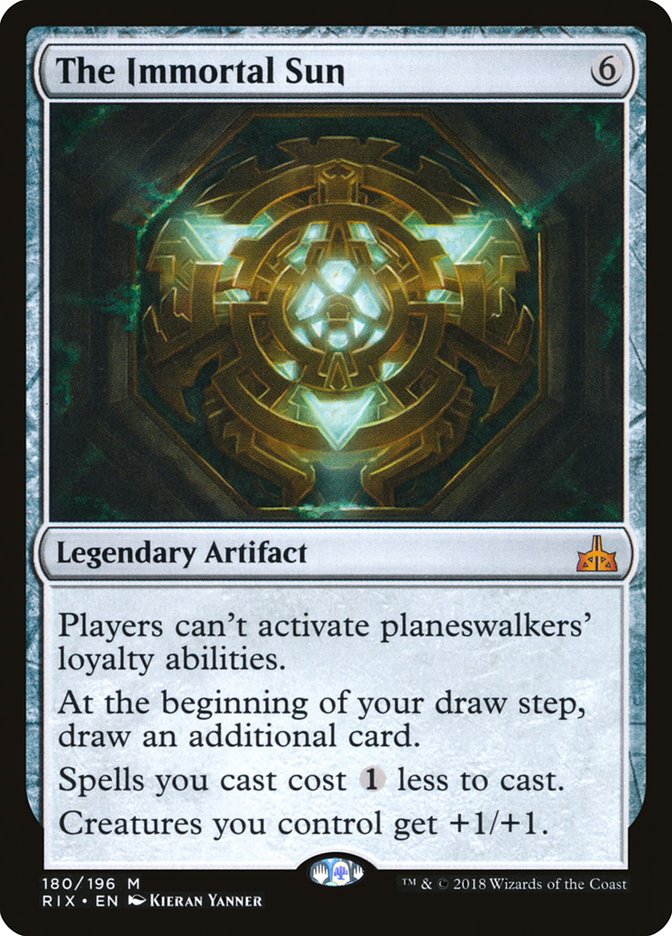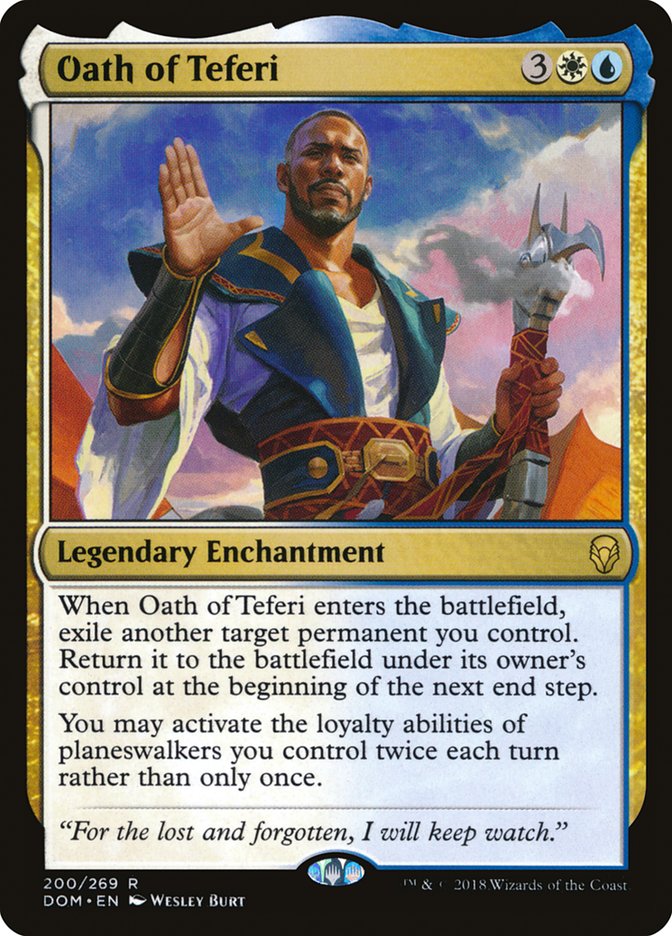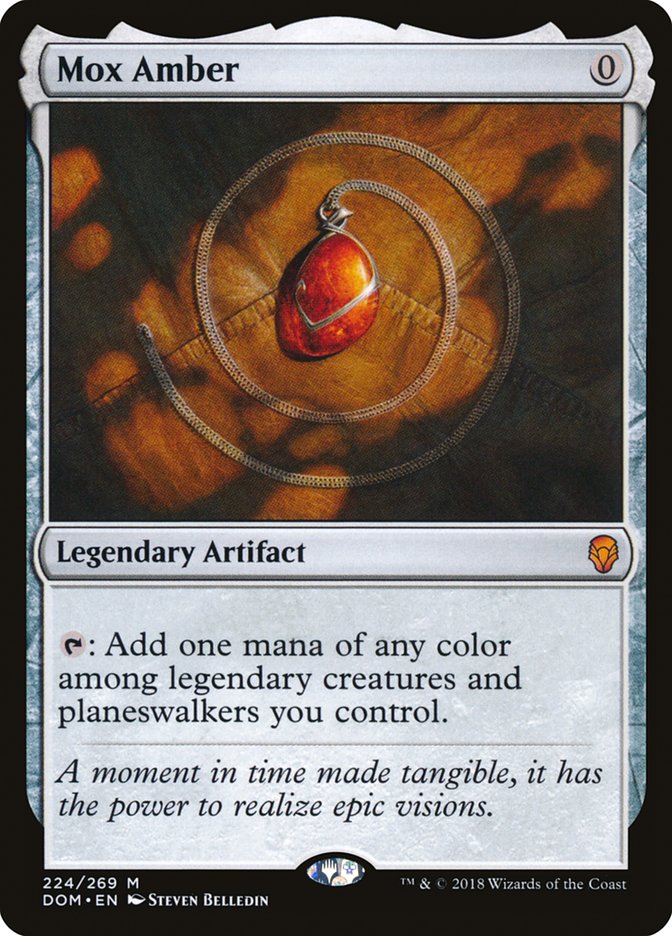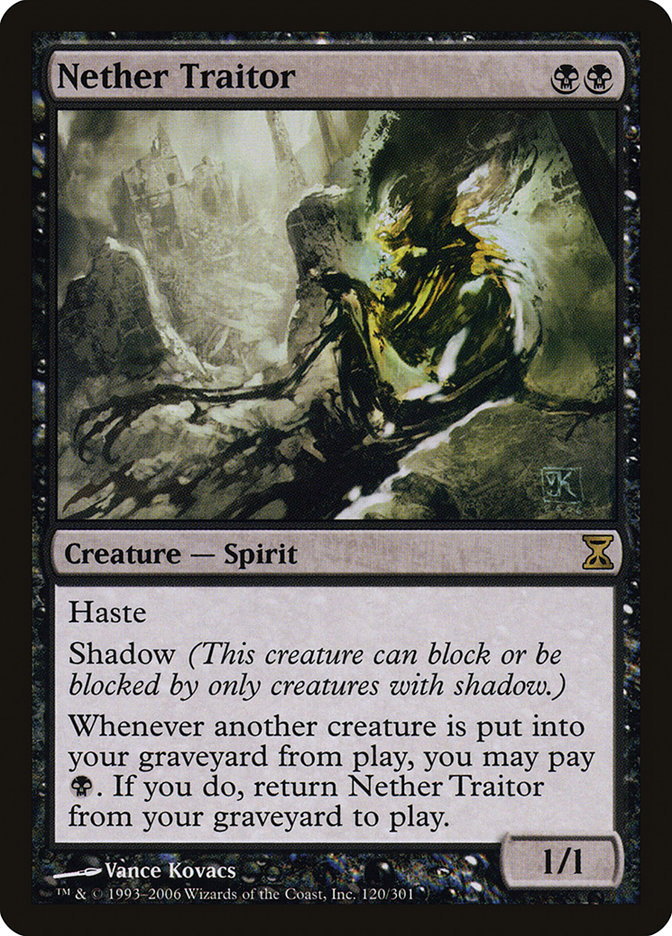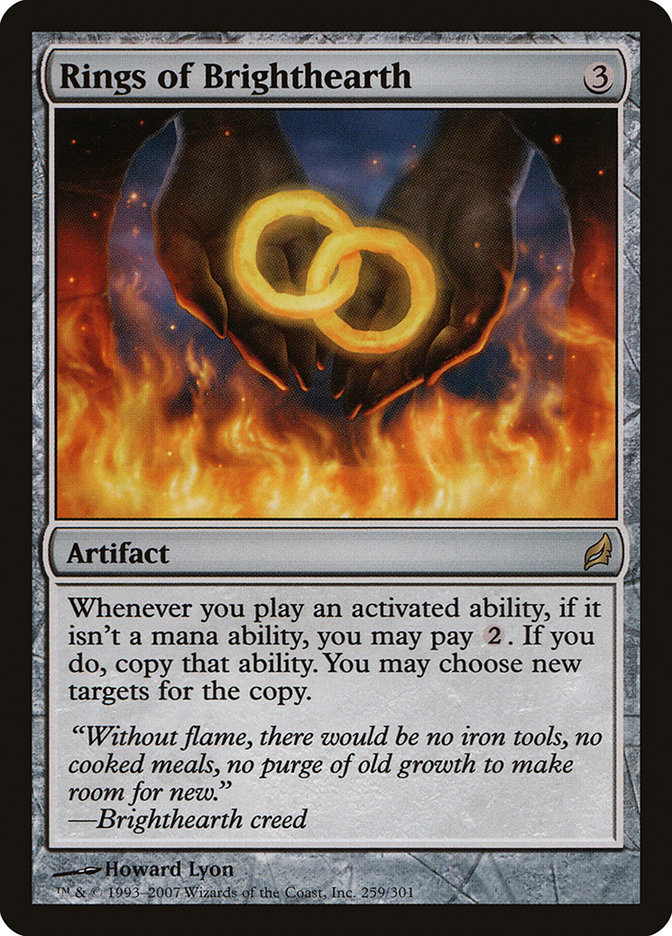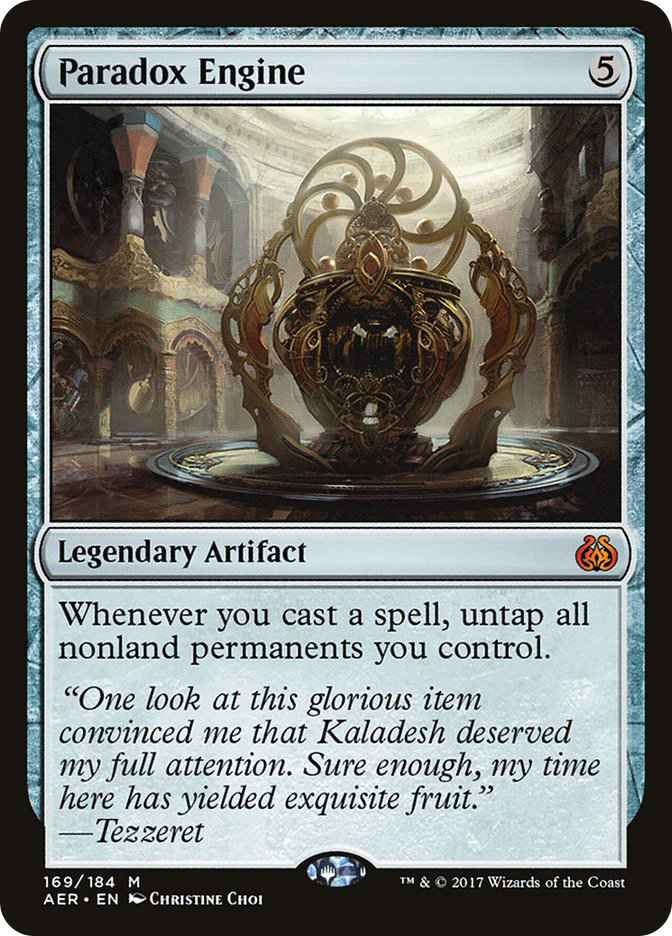Back in one of those ancient and heady years that the Black Eyed Peas would have simply dismissed as “two thousand and late,” Wizards of the Coast released Betrayers of Kamigawa.
Betrayers wasn’t great, but the set did contain a card called Umezawa’s Jitte; one of the most format-warping cards ever printed. Standard cards rarely broke $20 back then, but Umezawa’s Jitte quickly began threatening to shatter that trend.
Then WotC released the Betrayers of Kamigawa theme decks. Back in the Betrayers era, preconstructed decks were almost comically useless. None of them ever seemed to have as much as a single tournament-viable card, much to the chagrin of every new player who registered a deck with a name like Saproling Slaughter in their local FNM.
Not this time, though. WotC underestimated just how good Umezawa’s Jitte was going to be, and a precon called Rats’ Nest included a copy of the Jitte as one of its two token rares.
The result? Copies of Rats’ Nest sold out as soon as they hit shelves. It was basically free money. It didn’t matter that folks were buying an entire deck for a single card – if that card is good enough, and demand remains high enough, the purchase is always going to be worth it.
Why am I bringing this story up today? Because WotC has finally revealed the lists for the 2019 Challenger Decks. And much to my surprise, one of them contains Arclight Phoenix, the most-played creature in all of Modern.
There’s a lot to unpack here, both about Arclight Phoenix and about all the rest of the cards in the 2019 Challenger Decks, so let’s tackle our Challenger Deck questions one at a time. Is it worth pre-ordering these decks? Heck, should you be going around from store to store buying them up indiscriminately, or will they just cause cards like Arclight Phoenix to tank? Speaking of, which of the reprinted cards are going to drop in price the most, and are there any cards that might see a price increase thanks to the proliferation of these decks?
We’ll be getting to all of this and more in today’s article. But first…
Which Challenger Deck Has the Most #Value?
Even though this answer seems pretty dang obvious at first glance, I think it’s worth going through each of the four decks in turn.
In order to measure value, I’m only going to count cards that are currently selling for at least $2. While you can probably buylist away a bunch of the random commons and uncommons from these decks in order to get a couple of bucks off the overall purchase price, that’s small potatoes compared to the real reason we might buy in.
United Assault
- History of Benalia x2 – $8/ea
- Legion’s Landing x2 – $6/ea
- Benalish Marshal x4 – $2/ea
Star City Games is currently selling a set of the four Challenger Decks for $110, which comes to $27.50 per deck. That’s a few bucks lower than the product’s MSRP of $29.99 – and yes, the Challenger Decks do have an official MSRP, despite WotC saying they were getting rid of such things. I know, I don’t get it, either.
Even though this deck doesn’t look like much, the total value of the eight chase cards in United Assault comes to $36. This makes it a pretty solid pick-up for anyone who actually wants to play the deck, though it’s not a great deal for speculators.
Lightning Aggro
- Rekindling Phoenix x1 – $20
- Goblin Chainwhirler x4 – $4/ea
- Banefire x1 – $3
- Runaway Steam-Kin x4 – $2/ea
- Lava Coil x2 – $2/ea
- Experimental Frenzy x2 – $2/ea
There’s a lot of value in Lightning Aggro. At current retail, this box clocks in at a full $55 – and that’s just for the cards that are worth at least $2! While I still don’t think this one is worth snagging at retail just to flip, it’s the clear second-best Challenger Deck and it’s a totally fine purchase at MSRP.
Deadly Discovery
- Overgrown Tomb x1 – $8
- Jadelight Ranger x2 – $5/ea
- Vraska, Relic Seeker x1 – $4
- Woodland Cemetery x2 – $4/ea
Meh. You get the sense that WotC was expecting Vraska, Relic Seeker to be worth more than $4 by this point in the set’s lifespan, but they had no way of knowing that Hydroid Krasis would become the finisher of choice for black and green midrange decks. As a result, there’s only about $30 worth of value in Deadly Discovery – close to the set’s retail price. This one’s a pass unless you want it as a base for building Sultai Midrange.
Arcane Tempo
- Arclight Phoenix x1 – $30
- Sulfur Falls x3 – $10/ea
- Niv-Mizzet, Parun x2 – $4/ea
- Entrancing Melody x3 – $4/ea
- Chart a Course x4 – $2/ea
- Lava Coil x4 – $2/ea
Um, yeah. So the current total value of this deck is $96, including Arclight Phoenix. Three copies of Sulfur Falls also being included in this deck seems almost unfair. We’ll talk more about this deck in the next section, but I really can’t see a world in which you’d ever be unhappy paying $30 for this deck.
Will Any of the Challenger Decks Maintain Their #Value?
This, I think, is a much more interesting question.
Let’s start by looking at what happened to last year’s crop of Challenger Decks. We’re now several months after most of these decks have rotated out of Standard, and here’s what the key cards are worth:
Counter Surge
- Walking Ballista – $15
- Fatal Push – $4
Hazoret Aggro
- Chandra, Torch of Defiance – $14
- Hazoret the Fervent – $4
- Soul-Scar Mage x3 – $2/ea
- Abrade x2 – $2/ea
Vehicle Rush
- Dragonskull Summit – $6
- Inspiring Vantage – $4
- Concealed Courtyard – $2.50
Second Sun Control
- Settle the Wreckage – $6
- Field of Ruin x2 – $4/ea
Unsurprisingly, none of these decks has any surplus value this far after rotation. For example, Counter Surge had four copies of Glint-Sleeve Siphoner, which was retailing for $5 when the Challenger Decks were announced last March. By the end of April, they were down to just $2. Now they’re 50 cents.
It’s hard to know how much of this drop, as well as all the others, was due to the Challenger Deck reprint versus shifts in the metagame or normal rotational economics. For example, Hazoret the Fervent was a $20 card on March 1st of last year. By May 1st, it was still $15. The reprint was almost certainly responsible for some of this drop, but the card continued to fall off from there regardless.
After looking at these numbers, a few things seem pretty clear to me.
First, Standard-only cards that are reprinted in these decks can tank hard and fast. This bodes poorly for cards like Legion’s Landing, which will probably end up closer to $2 than $6 thanks to this reprint.
Second, the number of reprinted copies matters a lot. For example, Vehicle Rush only contained one copy of Inspiring Vantage and Concealed Courtyard, which kept their prices relatively high. By contrast, Second Sun Control had a full four copies of Irrigated Farmland, which is a big part of why that one is down to just $0.75.
Third, this reprint did nothing to kill the value of a Modern staple like Walking Ballista. In fact, Walking Ballista is more expensive now than it was the day last year’s Challenger Decks were announced. This bodes well for Arclight Phoenix’s future price.
So. Which 2019 Challenger Decks will hold their value best? Let’s take another look.
United Assault doesn’t look great for long-term value. History of Benalia will likely end up remaining a $5 card long-term, but both Legion’s Landing and Benalish Marshal could easily end up being worth $1-$2.
Lightning Aggro still seems like a stronger buy. Rekindling Phoenix is seeing a decent amount of Standard play again thanks to the several flavors of Gruul and Rakdos Aggro running around the current metagame, and it should remain over $10 until rotation comes into play, at which point it’ll probably start dropping toward $4-$5. Experimental Frenzy is probably stable at $2 since there’s casual and even some Modern demand for that card. The others are probably all destined for the dollar range.
Deadly Discovery gains some ground when we start thinking about longer-term prices. A single copy of Overgrown Tomb in the “weakest” deck won’t be enough to tank the price of that card, and Woodland Cemetery probably isn’t dropping below $2.50. Vraska, Relic Seeker is at her price floor as well, which leaves Jadelight Ranger as the only card that’ll take a major hit at any point.
Lastly, Arcane Tempo still seems like a strong buy to me. Even if this causes Arclight Phoenix to drop below $30 for a while – heck, even if Faithless Looting is banned in Modern as well – I still feel like the Phoenix has a strong future in non-rotating Magic. A single reprint did not hurt Walking Ballista, and it’s not going to hurt Arclight Phoenix, either.
That said, I think some of the other cards in Arcane Tempo are going to tank, especially since a lot of people are going to buy this deck and buylist everything other than the Phoenix. The interesting thing is that Sulfur Falls is also a powerful card in Modern, and I still don’t think it can really drop below $4-$5 for long. That means that these other cards – Niv-Mizzet, Entrancing Melody, and the powerful uncommons – are likely heading toward zero.
The real test is going to come when we see how ubiquitous these Challenger Decks are. My guess is that you’ll see a lot of stores with the other three decks in stock for months after Arcane Tempo is sold out, and the contents of the best Challenger Deck are never going to drop below retail. Other stores will simply charge more for Arcane Tempo, while others will only sell them in full bundles of four. It’s also possible that there will be plenty of Arcane Tempos to go around for a while, but even in this case I suspect that the retail value of the cards inside will hover around the $30 mark and will start to increase in price again as soon as the decks sell out. Regardless, I feel like Arcane Tempo is going to remain a strong buy for the foreseeable future.
Why Don’t Any of These Decks Have Teferi, Hero of Dominaria?
At first blush, I was kind of surprised that Teferi wasn’t included in any of these decks. The Azorius-colored planeswalker has been such an integral part of Standard for so long – could WotC really create four “competitive” decks that all ignored the format’s most powerful planeswalker?
Plus, there was precedence for Teferi showing up in one of these boxes. Last year’s Challenger Decks had Chandra, Torch of Defiance, which was the “it” planeswalker of 2017. Aren’t Teferi and Chandra the exact sort of cards that WotC wants to try and wring a few more bucks out of before they rotate out of Standard?
In retrospect, however, the problem with putting Teferi into one of these decks seems to have been two-fold.
First, Teferi is often the sole (or at least primary) win condition in most of the decks where it shows up. To be effective in that role, you need a full four copies of that planeswalker in your deck. WotC was never going to put more than one copy of Standard’s most expensive card into any of these decks without upsetting a whole lot of Teferi owners, so that option was almost certainly off the table from the start. It’s possible that the deck designers could have thrown some awkward control finishers into an Azorius Control shell alongside a single Teferi, but there’s no guarantee that deck would have been even remotely competitive. It would have felt more like a way to sell Teferis than an actual deck, which is the exact sort of thing that they’ve been trying to avoid with this product.
Second, there’s the fact that this product was designed before we knew anything about what the Ravnica Allegiance Standard format was going to look like. Lead designer Donald Smith was pretty up-front about this in his article, where he explains that this is why none of the Challenger Decks were three-color brews like Sultai or Esper. Notably, none of the Challenger Decks feature the five guilds from Ravnica Allegiance, either – two are monocolored, and two are from guilds in Guilds of Ravnica. This makes sense, because there was no real way to know how the new Ravnica Allegiance cards would affect the decks that were heavy into Azorius or Simic. WotC wouldn’t want to release a product where the chase cards felt obsolete before it even hit shelves.
So yeah. WotC knew that a legitimately good Teferi deck would need three to four copies of the planeswalker, which was never going to happen, and that the consensus Teferi deck would likely involve a lot of cards from a set that wasn’t out yet when the Challenger decks were designed. Thus, Teferi will remain expensive for the next couple of months. Hooray!
Does This Mean That Future Chase Planeswalkers Won’t Be Included in Challenger Decks?
It depends. Now that we have two years’ worth of Challenger Decks to look at, it’s clear that WotC isn’t just trying to squeeze reprints into them; they want to make a product that feels like a cohesive deck. With a planeswalker like Chandra, Torch of Defiance, it’s easy enough to build a powerful red aggro deck that functions well whether you draw your single Chandra or not. With Teferi, it’s not so easy. At this point, I think all we can safely say is that all cards from the best five or six decks in the fall metagame are on the table for potential reprints going forward.
Which Cards Might Gain Value Thanks to the Challenger Decks?
This question is a little easier to answer.
While some of you are going to buy these decks in order to flip them, most of the players who buy them are going to look for ways to upgrade them into tier decks. Thus, it should be pretty easy to look at the established version of each Challenger Deck and see which pieces might be missing.
Let’s start with United Assault, which is close to Azorius Aggro. All we need are the following pieces, commons and uncommons excluded:
- Ajani, Adversary of Tyrants x2 – $16/ea
- Hallowed Fountain x4 – $9/ea
- History of Benalia x2 – $8/ea
- Glacial Fortress x4 – $8/ea
- Legion’s Landing – $6
- Deputy of Detention x2 – $4/ea
- Tithe Taker x4 – $3/ea
- Venerated Loxodon x4 – $0.80/ea
- Tocatli Honor Guard x2 – $0.80/ea
This gives United Assault a total upgrade price of $147. Of course, there are ways of making this cheaper – you can get a second copy of United Assault in order to take care of the extra copies of History of Benalia, Legion’s Landing, and Tocatli Honor Guard, assuming you can sell the other cards in order to defray some of the cost. You can also skip the Deputy of Detention package, which would save you a full $68 in terms of building your manabase. Lastly, the two copies of Ajani in the sideboard aren’t truly necessary if you’re just trying for a budget FNM brew. Some people run a singleton in the maindeck these days, but again, budget players can probably ignore this.
That leaves four copies of Tithe Taker and four copies of Venerated Loxodon as the clear additions that everyone is going to want to make. Venerated Loxodon is already under $1, but Tithe Taker is a more recent card with greater demand and higher upside. I wouldn’t be surprised if it ends up gaining value over the next couple of months.
Let’s move on to Lightning Aggro, which is most analogous to Rakdos Aggro decks like this one. Here are the potential additions:
- Rekindling Phoenix – $20
- Angrath, the Flame-Chained – $13
- Blood Crypt x4 – $10/ea
- Treasure Map – $7
- Risk Factor – $7
- Dragonskull Summit x4 – $6/ea
- Dire Fleet Daredevil – $4
- Experimental Frenzy x2 – $2/ea
- Rix Maadi Reveler x4 – $0.80/ea
As written, this is an additional $123 in upgrades – not as much as United Assault, but still fairly pricey. The good thing is that a lot of these cards are unnecessary from a budget perspective. Yet again, we can cut the black cards and two-color manabase pretty easily, which chops a full $77 out of the price. The additional Rekindling Phoenix and Experimental Frenzies can come from a second copy of Lightning Aggro. Treasure Map, Risk Factor, and Experimental Frenzy are all sideboard singletons – pass.
That leaves us with Rix Maadi Reveler as the only maindeck four-of inclusion that you really need to snag as an upgrade. Much like Venerated Loxodon, the card is just $0.80 right now. There’s not a ton of financial upside here, but demand will go up.
Moving on, Deadly Discovery is about as close as we’re going to get to Sultai Midrange. Unfortunately, the upgrades are liable to be quite pricey. Here’s the differences between the Challenger Deck and Ari Lax’s build from Mythic Championship Cleveland:
- Hydroid Krasis x4 – $40/ea
- Vivien Reid x3 – $30/ea
- Carnage Tyrant – $18
- Assassin’s Trophy – $14
- Breeding Pool x4 – $13/ea
- Watery Grave x4 – $13/ea
- Vraska’s Contempt x3 – $10/ea
- Hostage Taker x4 – $8/ea
- Drowned Catacomb x3 – $8/ea
- Overgrown Tomb x4 – $8/ea
- Jadelight Ranger x2 – $5/ea
- Woodland Cemetery x2 – $4/ea
- Midnight Reaper – $3
- Find – $1
Yeah. Upgrading Deadly Discovery to Sultai Midrange would cost you a full $510. Is anyone really going to buy Deadly Discovery, say to themselves, “Well, I guess I have to build Sultai now,” and then drop another $500 on the deck at this point? Maybe, but I don’t think enough people will take that path to move the needle on any of these card prices.
There’s no real way to play a budget version of this deck, either. I guess you could do without Hydroid Krasis, but that would be a pretty bad time. You’re not playing this deck without Vivien Reid at the very least, and that’s a full $90 out of pocket.
Lastly, Arcane Tempo is pretty close to Izzet Drakes. What would it cost you to turn this deck into a tournament-caliber brew instead of just stripping it for its Arclight Phoenix? Let’s see.
- Arclight Phoenix x3 – $30/ea
- Steam Vents x4 – $14/ea
- Blood Crypt – $10
- Sulfur Falls – $10
- Ral, Izzet Viceroy x2 – $7/ea
- Sorcerous Spyglass x2 – $3/ea
At first glance, this looks like a pretty expensive endeavor. It’ll cost you $186 for all the upgrades, which isn’t great. The more I think about it, though, the more I feel like upgrading this deck is kind of a savvy play.
Here’s why. Most of the cost is tied up in Arclight Phoenix and Steam Vents, two cards that are terrific in Modern. As most Standard cards approach rotation, they’re going to tank in price. Not these two, though. They might see a dip in value – especially if Faithless Looting is banned in Modern – but neither is at risk for falling entirely off the map. In fact, they may end up being worth more than they are now if you’re willing to wait long enough, just like Walking Ballista was. It’s not a perfect comparison, but the Zendikar and Khans of Tarkir fetchlands only went up in price as rotation approached.
In terms of cards that might see a small uptick in value thanks to this deck, I’m looking at Ral, Izzet Viceroy. I still suspect that most people who buy this deck are just going to strip it for the rares, but the powerful planeswalker could see a small jump in value regardless.
Which Deck(s) Should I Buy If I Want to Play Budget Standard Myself?
I mostly answered this question in the last section, but I wanted to lay it out here in plain English. Your best bet is probably snagging either United Assault or Lightning Aggro, keeping them monocolored, and spending another $20-$30 on further upgrades. United Assault needs the other two copies of History of Benalia as well as four copies of Venerated Loxodon and Tithe Taker at the very least. Lighting Aggro needs the Rix Maadi Revelers, the other two Experimental Frenzies, and probably the other Rekindling Phoenix.
Upgrading Deadly Discovery seems silly to me. Upgrading Arcane Tempo seems fine if you’re willing to buy the Steam Vents and the other copies of Arclight Phoenix, which are a safer long-term hold than most Standard cards right now.
Which Deck(s) Should I Snap Buy If I See Them for Sale at MSRP?
Arcane Tempo. Star City Games is selling it on pre-order for $50, and the only eBay pre-sale I see right now is also at the $50 mark. If buying a $50 product for $30 is appealing to you, then you should buy any copy you see for $30. Recouping that $50 in value seems easy enough, since it’s effectively $30 for Arclight Phoenix, $5 each for Sulfur Falls, and $5 for the rest of the deck combined. This isn’t enough value to make me want to run all over the city buying out stores or anything, but it’s a nice bonus if I happen to see it on a shelf at full cost. Don’t bother with any of the other decks unless you get a great deal on them or you want to modify them into a budget Standard brew yourself.
This Week’s Trends
In Standard, it was an interesting week for all our War of the Spark “planeswalkers matter” specs. While there weren’t any major additional spikes, it was nice to see that cards like The Immortal Sun, Oath of Teferi, Mox Amber, and Bedevil have all stayed in put at their new price points.
Usually, spec-related spikes are followed by wild overcorrections. Consider a card like Semblance Anvil, which jumped from $2 to $15 before dropping right back down to $8. This is because most of the demand was due to speculators trying for the quick-flip. Not so for the planeswalker spec cards like The Immortal Sun, which hit $35 and hasn’t budged. People are really excited about this new set, and nobody is selling into the hype yet. I’d still consider doing so, because I expect people to be disappointed by many of the planeswalkers in War of the Spark, but it’s less urgent than I thought. For now, these prices are sticking and sticking hard.
It was also a very strong week for Modern prices. Jace, the Mind Sculptor gained almost $20 this week as it continues its run toward $150. Scalding Tarn; Chalice of the Void; Verdant Catacombs; Gemstone Caverns; Ugin, the Spirit Dragon; Bloodstained Mire; Azusa, Lost but Seeking; and Leyline of the Void all gained at least $5 this week.
What’s going on here? Well, Modern Horizons hype is certainly part of it, as well as market confidence due to the fact that we know that we’re very unlikely to get a Modern reprint set this year. But Modern prices literally always spike in March – it’s like clockwork. Back in January, I wondered if a lackluster tax return season in the US plus worries about the pivot to Arena would prevent that from happening this year. Nope. Modern season is doing the thing that it always does, and I’d expect prices to keep going up for the next couple of weeks at least.
I don’t think we’ve talked about Kalitas, Traitor of Ghet yet, but it’s about time we do. The mythic creature is a two-of in the Modern Golgari Midrange deck that’s been showing up more and more on Magic Online, and it finally won a Regionals event two weeks ago. People love to play decks like this whenever they’re viable, and all the other cards in Golgari Midrange are all known staples. Kalitas is currently sold out at $14, and I suspect it’ll end up in the $20-$25 range if the deck remains popular.
Also up big this week? The entire Commander market. Nether Traitor, Rings of Brighthearth, and Paradox Engine all gained about $20 (!) this week, as entire marketplaces were bought out. All three cards are slam-dunk Commander staples, and these spikes were an example of speculators piggybacking off real-world demand. Expect slight declines from current highs, but I can’t imagine any of these cards crashing either.
The world of casual Magic saw a lot of smaller spikes, too. Ulamog, the Ceaseless Hunger and Kozilek, the Great Distortion from Battle for Zendikar block both saw major spikes. It’s possible that this has something to do with Jesse Whaley’s Modern Eldrazi Tron list from an IQ in Cookeville last week, but that list doesn’t run Kozilek, so I’m guessing the spike has more to do with Commander demand.
At any rate, I expect these casual spikes to continue for at least another month as well. It’s bull market season in Magic, folks – if you’ve been waiting to sell a lot of cards into a strong market with lots of hype, now’s the time.


